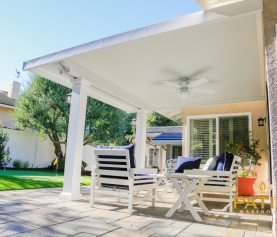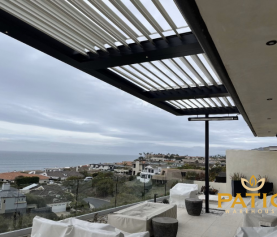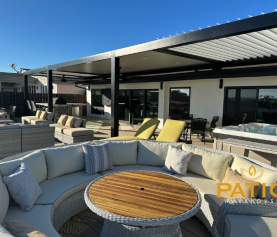Sunroom Install
Sunroom Install
Dreaming of a sunroom? A bright, airy space to enjoy the outdoors from the comfort of your home? You’re not alone. This guide walks you through a sunroom installation, from planning to budget.
Table of Contents:
- Planning Your Dream Sunroom
- Choosing the Right Location and Style
- Budgeting for Your Sunroom Install
- Sunroom Install: Materials Matter
- Building Your Sunroom
- Laying the Foundation
- Framing, Windows, and Doors
- Finishing Touches: Wiring, Insulation, and Flooring
- Enjoying Your New Sunroom
- Decorating and Furnishing
- Maintenance
- Conclusion
Planning Your Dream Sunroom
A successful sunroom installation begins with planning. Consider the room’s purpose: relaxation, entertaining, or an indoor garden? Consider the design as well.
Choosing the Right Location and Style
Think about the best location for your four-season room or sunroom addition. A south-facing room offers beautiful sunlight but might overheat. What about offers beautiful features, screen rooms and even the materials that can help with these situations?
An east-facing sunroom offers pleasant morning light. A west-facing one is perfect for sunsets. North-facing rooms have softer light. There are various styles like sunrooms, three-season rooms, four-season rooms, and screened porches.
Budgeting for Your Sunroom Install
Sunroom addition costs depend on size, style, and materials. Sunroom costs are generally between $100 to $350 per square foot. Free estimates help understand pricing, and financing is an option.
Your budget should include permits and foundation work. Also, factor in patio furniture and other items.
Sunroom Install: Materials Matter
Several options exist for sunroom materials, such as those often used when you hire a professional sunroom installer.
- Vinyl: Low-cost and low-maintenance. Vinyl is a good material if the costs associated with your addition cost is the number one concern for you.
- Aluminum: Durable and weather-resistant, unlike pressure-treated wood which is susceptible to water damage.
- Wood: Offers flexibility for custom sunrooms and a variety of door â design.
Comparing different wood options helps find the right features for your sunroom project. Consider Alumawood, Ultra/Classic Elitewood, and LifeRoom Elitewood. If that’s too overwhelming you can have existing roof parts used to determine how your current layout is most amenable to making the offers beautiful room that fits within the current constraints of what you want to build.
Building Your Sunroom
This guide assumes you’re hiring a contractor, rather than using a DIY kit, for your sunroom installation. Sunroom addition building code requirements may also come into play when adding your four season sunroom.
Laying the Foundation
The installer pours the foundation, which could be a concrete pad, wood deck, or composite deck. Existing foundations might work, but a new one adds time and cost. Before moving any dirt the installers need to see the job site and discuss sunroom addition cost details and confirm how local building codes apply.
An installer assesses your space. This determines what exists, as sometimes this is unclear to the homeowner, such as patio covers being attached and needing replacement. It is important to ensure no permits are missing when undertaking your home improvement projects so ensure everything gets documented and no permits are skipped.
Framing, Windows, and Doors
The frame is your sunroom’s skeleton. Strong materials are key, whether for sunrooms or patio covers. Vinyl and aluminum are low-maintenance, while wood offers customization. Make sure all code requirements are met too.
Measure for custom sunroom windows. Their placement impacts wall panels, especially in conversions from screened porches. Having a solid foundation matters before any room windows go in.
Doors enhance style and living space. Consider energy-saving glass, natural sunlight visibility, and windows that open. Consider additional living space factors too like how much sunlight you get into existing parts of the room and the best places to cut holes into existing wall panels. Large windows in a standard three-season room would improve the natural sunlight available from glass walls as another part of your room floor design to allow maximum flexibility and enjoyment. Large windows would add great value.
Finishing Touches: Wiring, Insulation, and Flooring
Wiring, insulation, and flooring are crucial. Professional wiring is essential, adhering to code requirements for electricity. These four-season rooms offer year-round comfort. Insulation enhances energy efficiency. Be sure to do plenty of planning here and don’t forget about weatherstripping around the sunroom windows as this will save you money.
Flooring depends on existing concrete slabs or decks. Prefab sunrooms might need different foundations. Budget projects often skip flooring, opting for rugs due to average costs. You could look at some sunroom kits, too. Be sure you hire professionals or even watch how to videos, if this is one of the parts you want to complete yourself. Hire help for electrical or plumbing, however, since a mistake in those areas can be a big deal.
Enjoying Your New Sunroom
Your new sunroom adds another beautiful spot to your home. This will become your home’s most popular and beautiful space with windows open and a large screened space available in both screen rooms and screen room format to make the ultimate space of your dreams come to life in what becomes your new favorite three season room. It will surely become a great part of any additional living.
Decorating and Furnishing
Furnishing creates functional additional living space. Large windows and a concrete patio are great for a three-season room. They leverage the concrete foundation’s integrity and offer a versatile patio cover. It creates beautiful, affordable additional living, maximizing space and maximizing the beautiful additional benefits of a beautiful room such as large windows and screens. Sunroom parts can be swapped out as you refine the space into what best works for you over the next 3 years.
This type of natural light connects you to nature without major rebuilds, plus it offers energy savings.
Maintenance
Regular dusting and window washing maintain your sunroom’s beauty. Clean debris from patio covers or around the walls of a three or four-season room. For specific advice, consult your job site foreman. They have detailed knowledge applicable to various room addition and window brands.
A sunroom install transforms homes. Successful projects require planning, skilled work, and attention to glass walls’ structural integrity, since extreme wind can make windows open on accident or even cause large damage in general when objects get flown around like projectiles during strong wind storms. Patio Warehouse excels in this area, heading towards its 10,000th patio covers and sunroom installations.








